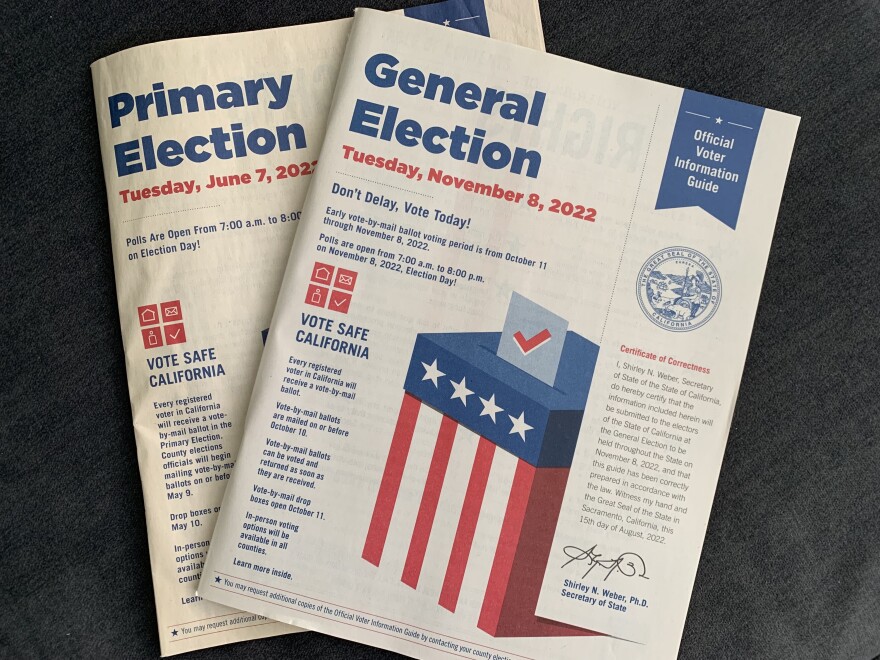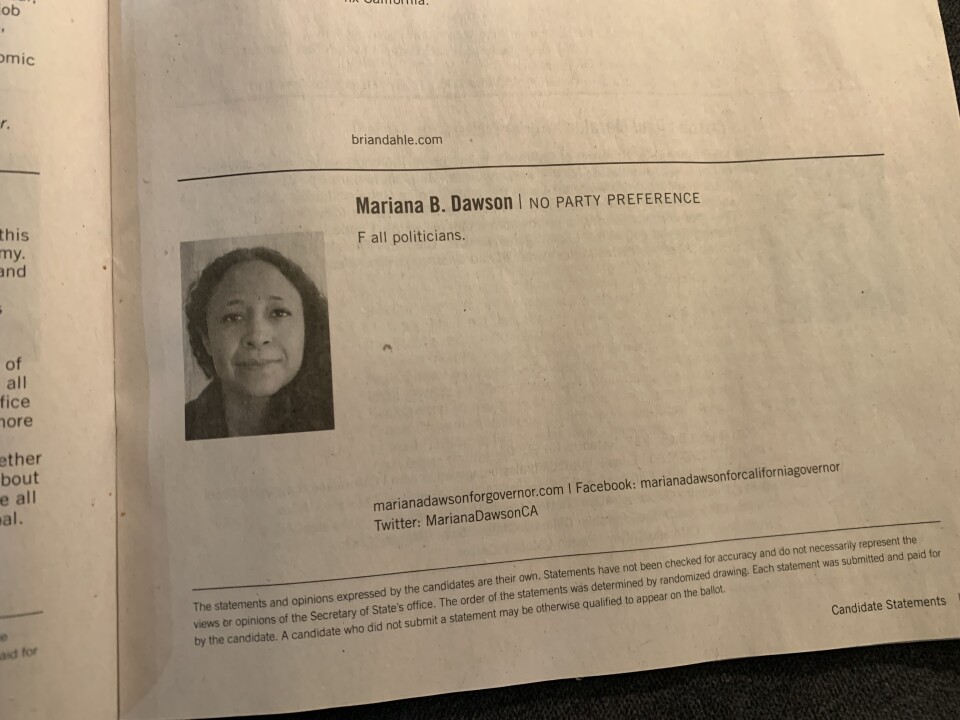With our free press under threat and federal funding for public media gone, your support matters more than ever. Help keep the LAist newsroom strong, become a monthly member or increase your support today.
Those (Sometimes Provocative) Candidate Statements In Your Voter Pamphlet Are Super Expensive

When researching candidates, you might have turned to the voter information guide that all registered voters receive in the mail about a month before the election. You know what I’m talking about — it’s that thick booklet of recycled paper that you toss aside in early October while thinking, “Oh yeah, there’s an election coming up again, I need to do my research.” Then you promptly forget about it until the night before Election Day.
These booklets contain official statements from candidates running for statewide office, as well as arguments for and against ballot measures and basic details about the voting process. But some candidates don’t even bother submitting a statement. Sometimes even well-known candidates don’t. Gov. Newsom didn’t for the Nov. 8 election, for instance.
It’s understandably frustrating when you’re scraping for something — anything — to give you a hint about what that name on your ballot is all about. A reader wrote to us about this recently, asking: “Are there any state or federal plans to make it mandatory for every candidate to provide a candidate statement?”
The short answer is no. And here’s a possible reason why.
Candidate statements cost $25 per word to be included in the state voter information guide. They’re a maximum length of 250 words, so those who want to make full use of their space pay $6,250 for the privilege to do so. It turns out paper isn’t cheap.
Mariana B. Dawson, a candidate who ran for California governor in the June primary, submitted as her statement: “F all politicians.” That cost $75!

That might be chump change for some candidates, but for many candidates in low-profile down-ballot races, that could be a substantial portion of their campaign budget.
There are two problems here. One: it makes it harder for voters to make a decision. Two: It introduces a pay-to-play element into one of the only widely-distributed voting resources out there.
(Side note: If anyone finds a news outlet that pays $25 a word, please send a job listing my way.)
And wait, it gets even more expensive.
The $25 a word rate is just for the state voter information guide. There’s a separate sample ballot you’ve likely received in the mail that’s specific to L.A. County. That booklet has statements from candidates running locally, like those running for state legislature or U.S. House of Representatives.
There’s no uniform rate for candidate statements for the county voter information guide. Most likely that’s because the county is printing different versions of the booklet to coincide with what’s on your ballot. It might be printing one version with Candidate A’s statement included for a voting district of 300 registered voters, and another version with Candidate B’s statement for a district of 400,000. So if you’re running for office somewhere with a lot of voters, you’ll need to pay more for that precious real estate in the county voter information guide.
Each county has to submit a list to the California Secretary of State that outlines estimated costs for candidate statements by voting district. In L.A. County, the cost range for candidate statements in 2022 appears to be anywhere between $800 and $11,900 for a State Senate candidate running in L.A. County. It’s even more if you want to include it in languages other than English.

It’s important to note that candidates for statewide and state legislative seats only get the option to purchase space for a statement if they agree to voluntary spending limits for their campaigns. That’s one way to curb the advantage for those with deep pockets.
But there is a new option on the horizon. The L.A. County Board of Supervisors voted this year to launch a pilot program to allow candidates to submit online statements, which wouldn’t incur printing costs.
There wasn’t much fanfare about the program’s launch. But seven candidates — six for L.A. County Superior Court judge and one for Board of Supervisors — submitted online statements this year. If the program proves successful, we may see more official candidate statements show up online in future years.
Still, you can’t deny that a voter information booklet that shows up in every registered voter’s mailbox is going to get more eyeballs than a website that most people haven’t even heard of. So when you research the candidates for the next election, just keep in mind that that half-page of text attached to their name comes with a price.








